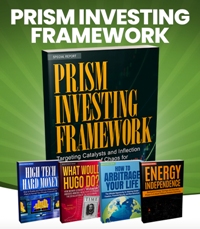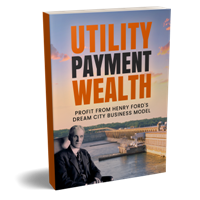 “If you hear a ‘prominent’ economist using the word ‘equilibrium,’ or ‘normal distribution,’ do not argue with him; just ignore him, or try to put a rat down his shirt.”
“If you hear a ‘prominent’ economist using the word ‘equilibrium,’ or ‘normal distribution,’ do not argue with him; just ignore him, or try to put a rat down his shirt.”
– Nassim Taleb, The Black Swan
Facing the Unexpected
There was an old European belief that persisted for centuries. People were convinced that all swans were white. Their reasoning was founded in logic and supported by empirical evidence.
Every single swan they’d ever seen was white. It was a universal truth. A rock-solid assumption based on all the available evidence.
But then, in the late 17th century, a Dutch explorer found black swans in Australia. The one-time truth that all swans were white was instantly shattered. The existence of black swans showed how fragile knowledge and assumptions can be when faced with the unexpected.
Nearly 20 years ago, in his book The Black Swan, author and options trader Nassim Taleb described a Black Swan as an event that comes as a complete and utter shock. Something that nobody saw coming, which has a massive, widespread impact. What’s more, after it happens, we look back and convince ourselves that it was totally predictable all along.
Black Swan events have several qualifying characteristics. First, they are events that come as a surprise, that are unpredictable outliers. There’s no way to forecast them. They fall outside the scope of regular models and expectations.
In addition, when Black Swan events happen, they have a major impact. They may have global ramifications that rewrite history and reshape the world as we know it.
Lastly, Black Swan events are rationalized in hindsight. After the fact, people contrive narratives to explain what happened, making it seem like it was obvious and inevitable. This is what Taleb calls the “narrative fallacy” – our human need to make sense of a chaotic world by telling ourselves a neat, tidy story, even if it’s a lie.
No doubt, history is full of Black Swan events. Here are a few recent classics…
War of the Nerds
On June 28, 1914, Gavrilo Princip, a Bosnian Serb student, assassinated Archduke Franz Ferdinand of Austria in Sarajevo. At the time, Europe was a latent powder keg. No one saw this single act leading to the massive conflagration of World War I.
The major European powers believed their complex web of military and economic alliances would prevent a large-scale conflict. Instead, a series of domino-like reactions were triggered, leading to the war to end all wars. The assassination itself was merely the unpredictable catalyst that set off a chain of events with an extreme, paradigm-shifting impact.
Yet this Black Swan event was not immediately understood. In fact, as late as three weeks after Ferdinand’s assassination the risks were still being dismissed by financial markets.
Author Frederick J. Sheehan wrote a piece titled War of the Nerds, for the December 2006 edition of Marc Faber’s Gloom, Boom & Doom Report. Several years ago, the article was still posted at Sheehan’s now defunct AuContrarian website. By chance, before the site vanished, we preserved the following excerpt:
“Every generation suffers its particular fantasies. So it was a century ago. Investors had grown so immune to the consequences of war that bond markets from London to Vienna didn’t flinch after the assassination that provoked World War I.
“Three weeks later, in the summer of 1914, the fear premium amounted to a total of one basis point. Then, in quick order, European markets ceased to function. A notable feature of this paralysis is that nothing of substance had changed – war had not been declared by any of the parties, but by now, minds were hyperventilating.”
Indeed, complacency toward risk can quickly change. The detachment among investors from a remote catastrophe can turn on a dime. As Sheehan observed, even without shots being fired, financial markets went from full functioning to completely immobile.
“Unthinking Attack on Reason”
The Soviet Union in the late 1980s appeared to be a strong, though struggling, superpower. But by the end of 1991, the USSR had vanished, shattering the post-WWII bipolar world order.
The speed and relative lack of bloodshed in its collapse were a profound surprise. It redefined geopolitics. In hindsight, we talk about the economic stagnation, central planning failures, and internal pressure that inevitably led to its downfall.
Yet few analysts or political scientists predicted its imminent and peaceful dissolution. Most assumed that any change would be gradual or violent.
Prior to the actual Black Swan event, those few who did forecast the imminent collapse of the Soviet Union were criticized and dismissed. James Dale Davidson, co-writer of the newsletter Strategic Investment, became an object of ridicule on the Today Show. He was scorned for supposedly dangerous and slack thinking. Newsweek magazine dismissed Davidson’s forecast as “an unthinking attack on reason.”
Financial markets are also subject to Black Swan events. For example, on October 19, 1987, the Dow Jones Industrial Average plummeted by 22.6 percent in a single day. This marks the largest one-day percentage decline in history.
This event, known as “Black Monday,” was a total shock. The market had been on a bull run for years, and while there were some warning signs of an asset bubble, no one expected such a dramatic and sudden collapse.
Experts scrambled to explain it after the fact, citing everything from program trading to investor panic. Yet, like Davidson’s forecast of the collapse of the Soviet Union, there were investors who saw it coming. They may not have predicted the exact event. But they did expect and anticipate it in a way that allowed them to exploit it.
Taleb personally profited from Black Monday to the tune of $35 to $40 million by taking a large position in out-of-the-money put options on Eurodollar futures. Still, he wasn’t the biggest winner…
On Black Swans and White Lies
When the dust settled at the end of the day on Black Monday, hedge fund manager Paul Tudor Jones had tripled the value of his fund while drawing a personal payday of an estimated $100 million. This was an almost unheard-of sum at the time. How did he do it?
In short, Jones attained these massive returns by doing something counter to what most other investors were doing. Over the five years leading up to October 19, 1987, U.S. stocks had nearly tripled. Most investors assumed the rapid price rise would continue without interruption.
But Jones, having an appreciation of irregular, but inevitable, stock market cycles, had been predicting that the market was going to crash. What’s more, Jones had the courage and conviction to massively short stocks. So, when the Dow plunged 22 percent, he tripled his investor’s money and, in the process, pocketed $100 million for himself.
As individual investors there are many lessons we can learn from Taleb and Jones. Black Swan events may be unpredictable, but the white lie is that they cannot be expected or anticipated. They happen. We should be ready for them.
Moreover, we should appreciate the irregular, but inevitable, cycles of the economy and the stock market, and allocate a portion of our holdings to assets that don’t correlate with the overall stock market.
This is a strategy that is accessible and available to everyone. And it is a strategy that can be used to secure outsized – asymmetric – gains when the stock market inevitably crashes. Positioning assets to profit from inflection points is fundamental to the Prism Investing Framework.
Right now, the stock market, as measured by the S&P 500, is near an all-time high. Valuations are at historic extremes. Nonetheless, bubbles can last for a very long time. And as monetary expansion accelerates (the FOMC cut the federal funds rate this week by 25 basis points) the bubble could continue inflating.
Still, one must recognize, the stock market’s continued rise in the weeks and months ahead because of monetary expansion will be in nominal terms. In real inflation adjusted terms, stocks will fall, as the dollar declines against goods and precious metals.
Holding gold is essential in this environment. At the same time, maintaining cash reserves to buy assets at fire-sale prices following the inevitable market crash is also wise.
You may not like it. But you can’t stop it. There’s a Black Swan event coming. At the very least, you should be prepared for it.
[Editor’s note: Join the Economic Prism mailing list and get a free copy of an important special report called, “Utility Payment Wealth – Profit from Henry Ford’s Dream City Business Model.” If you want a special trial deal to check out MN Gordon’s Wealth Prism Letter, you can grab that here.]
Sincerely,
MN Gordon
for Economic Prism





The article brilliantly illustrates how unpredictable Black Swan events disrupt our rational assessments of history. Its a stark reminder that we must remain vigilant and prepared for the unexpected, even amidst apparent stability.